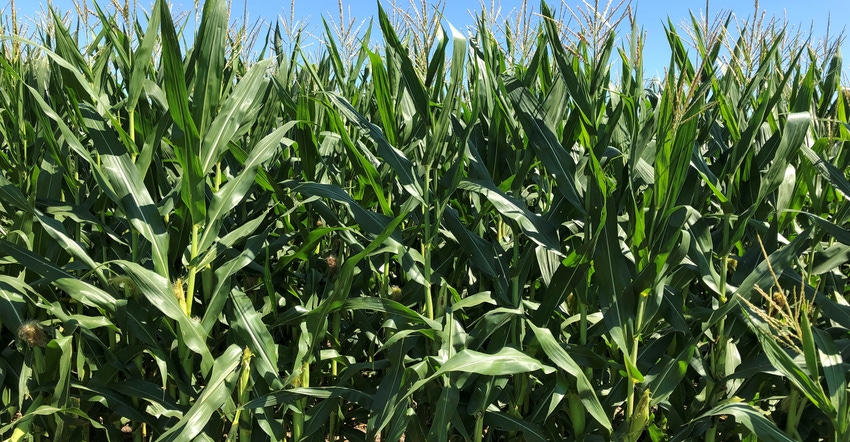August 8, 2019

The tallest corn in the area where I live near Franklin, Ind., was waist-high when I guided the minibus out of the school parking lot on July 13, headed for the Flint Hills near Junction City, Kan. Another adult and I were taking four FFA members there to judge in a national wildlife competition. Naturally, the farmer in me couldn’t help but size up crops as we drove along.
Corn should have been tasseling and pollinating all the way along the route we took in mid-July. We headed west along Interstate 70 through Effingham, Ill., and on to St. Louis. Instead of pollinating corn, I saw knee-high corn, bare fields and soybeans that were very small. On June 13, maybe it would have been believable. But this was July 13. Had the world gone crazy?
No, but it’s anything but a normal year. The next morning, we took I-35 within 90 miles of Wichita, Kan., and then veered off toward Strong City and into the Flint Hills. That’s grass country, not corn country. But in bottomland fields and wherever there were spots where limestone wasn’t at the surface, there was corn.
And for the first time on the trip, we saw corn tasseling, with ears visible. In fact, in many cases, pollination was well underway.
Location warp
Fast-forward to the following morning, July 15. I was standing in a tallgrass prairie pasture full of warm-season grasses, listening to experts tell judgers about grassland management. My cellphone rang, and I stepped away. It was Pete Illingworth at the Purdue Throckmorton Ag Center near Romney, Ind.
He was calling to tell me that the corn research plot I manage annually with Purdue’s Bob Nielsen needed rain. Planted June 3, it was not yet waist-high and was standing still.
Corn barely waist-high and needing rain in Indiana; corn filling ears in Kansas, without irrigation, in mid-July — what’s wrong with this picture?
I could tell from Pete’s voice that he was concerned about what might happen if it didn’t rain soon. After wanting it to stop raining less than six weeks ago, he was now desperate for rain.
Fortunately, over the next week it rained twice, getting the crop off and moving again. And to be fair, Kansas deserved a break this year. People there told us that last year the area we visited was stark brown at that time, as it suffered through a drastic drought. A research center that is home to a herd of bison had to provide supplemental water to the herd for the first time in 36 years in 2018 — but not this year.
Mother Nature has turned the tables in 2019 — at least so far. Better weather conditions recently have helped crops in Indiana, Illinois, Iowa, Ohio and other places improve. The big question now is whether there’s enough season left for everything to catch up completely and mature before frost.
Here’s hoping for a late frost. And let’s hope next year when someone asks where the best corn is in mid-July, I can say, “Indiana, of course!”
Comments? Email [email protected].
You May Also Like




